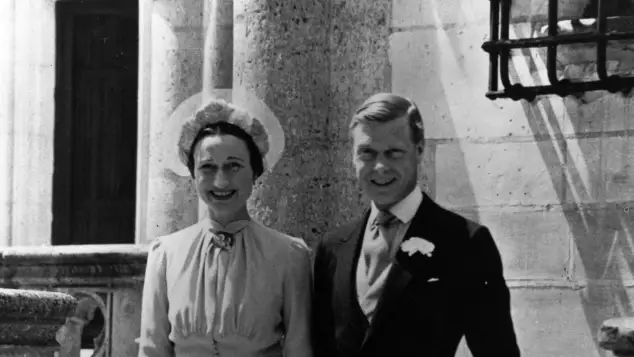Edward VIII was born the eldest son of the eventual King George V and Queen Mary on June 23, 1894. His reign began after the death of his father, George V, on Jan. 20, 1936.
Edward VIII's reign would last only 326 days, but it's one of the more unconventional periods in royal history for reasons beyond just this. Namely, the King's love for soon-to-be divorcee Wallis Simpson led to a constitutional crisis that resulted in his voluntary abdication of the throne on Dec. 11, 1936.
At the time, Simpson, a two-time divorcee with surviving ex-husbands, was seen as an unsuitable queen consort for the king to marry. But Edward persisted against the objections of the Church of England and the British government, eventually choosing to abdicate rather than veer from plans to wed Simpson.
King Edward VIII abdicates on Dec. 11, 1936
King Edward VIII announced his abdication in a radio broadcast on Dec. 11, 1936. "I have found it impossible to carry the heavy burden of responsibility and to discharge my duties as king as I would wish to do without the help and support of the woman I love," he said.
"The decision I have made has been mine and mine alone," he added, after many had speculated that Simpson was pursuing him for fame and fortune. However, the couple did marry in 1937 and remained together until Edward's death in 1972. They assumed the titles of the Duke and Duchess of Windsor after the abdication.
RELATED: The Biggest Royal Scandals of All Time
Seeing as the unwed king had no children, the abdication meant that Edward's younger brother, Albert, then the Duke of York, would succeed him as king. He did, as King George VI, on Dec. 11, 1936.
Along with his father, George V, and brother, Edward VIII, George VI was Britain's third monarch of 1936.
RELATED: Queen Elizabeth II Is This Close to the Record for Longest Reign in History
George VI becomes king in 1936, with new heir presumptive Elizabeth
King George VI went on to lead as Britain's ruler through the Second World War era. A speech he made at the outset of the war in 1939 was famously dramatized in the 2010 Best Picture-winner The King's Speech, which also portrayed the abdication crisis and the king's lifelong struggles with a stammer.
When George VI ascended the throne in Dec. 1936, his eldest daughter, Elizabeth, also became heir presumptive at the age of just 10-years-old. The king had no further children after beginning his reign, so his daughter became Queen as Elizabeth II upon her father's death in 1952.
Queen Elizabeth II is now 94-years-old and in the 68th year of her storied reign. But, had Edward VIII not opted for the drastic act of abdication in 1936, it's likely that he'd have produced an heir and Elizabeth never would've risen to first in the line of succession.







